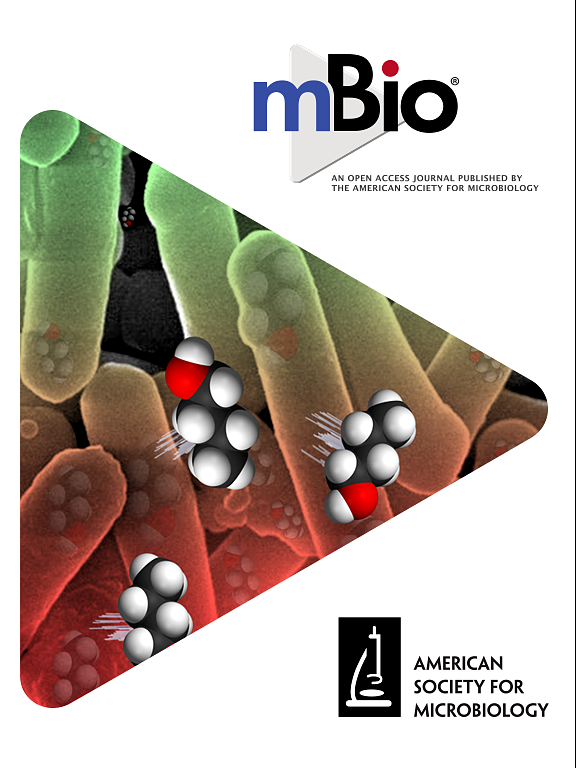维生素 D 受体对于伪狂犬病毒的复制至关重要。
摘要
维生素 D 受体(VDR)是一种核类固醇受体,可调节各种生物功能基因的表达。然而,VDR在伪狂犬病毒(PRV)感染中的作用尚未得到探讨。我们发现 VDR 对 PRV 的增殖有积极影响,因为敲除 VDR 会阻碍 PRV 的增殖,而过表达 VDR 则会促进 PRV 的增殖。此外,我们还观察到,PRV 感染会上调 VDR 转录,同时上调 1,25-二羟维生素 D3(VD3)的合成,这取决于 p53 的活化。此外,敲除 VDR 会阻碍 PRV 诱导的脂质合成,这表明 VDR 参与了这一过程。为了破译 VDR 在 PRV 感染期间刺激脂质合成的机制,我们进行了 RNA 测序(RNA-seq),发现 Ca2+ 信号通路中的基因显著富集。对 Ca2+ 的测量表明,VDR 促进了 Ca2+ 的吸收。此外,PI3K/AKT/mTORC1 和 AMPK/mTORC1 通路也在我们的 RNA-seq 数据中得到了富集。干扰VDR的表达或使用BAPTA-AM螯合Ca2+会明显影响PI3K/AKT/mTORC1和AMPK/mTORC1通路的激活、脂质合成和PRV的增殖。总之,我们的研究表明,PRV 感染会促进 VDR 的表达,从而增强 Ca2+ 的吸收并激活 PI3K/AKT/mTORC1 和 AMPK/mTORC1 介导的脂质合成。我们的研究结果为 PRV 的预防策略提供了新的见解。重要意义维生素 D 除了对骨骼健康和免疫功能有众所周知的益处外,还通过其受体--维生素 D 受体(VDR)在调节基因表达方面发挥着关键作用。尽管 VDR 的影响跨越多个生物过程,但它与病毒感染,尤其是伪狂犬病毒(PRV)的关系仍未得到充分探索。我们的研究说明了一种复杂的相互作用:PRV 感染会促进 VDR 的表达,而 VDR 的表达又会增强 Ca2+ 的吸收,从而激活关键的脂质合成途径、PI3K/AKT/mTORC1 和 AMPK/mTORC1。这些发现不仅加深了我们对宿主分子机制与病毒增殖之间错综复杂的动态关系的理解,还为探索旨在预防 PRV 感染的新策略开辟了道路。通过靶向 VDR 相关信号通路的成分,我们有可能开发出针对 PRV 以及其他类似病毒感染的新型治疗干预措施。The vitamin D receptor (VDR) is a nuclear steroid receptor that regulates the expression of genes across various biological functions. However, the role of VDR in pseudorabies virus (PRV) infection has not yet been explored. We discovered that VDR positively influenced PRV proliferation because knockdown of VDR impaired PRV proliferation, whereas its overexpression promoted it. Additionally, we observed that PRV infection upregulated VDR transcription alongside 1,25-dihydroxyvitamin D3 (VD3) synthesis, contingent on p53 activation. Furthermore, VDR knockdown hindered PRV-induced lipid synthesis, implicating VDR's involvement in this process. To decipher the mechanism behind VDR's stimulation of lipid synthesis during PRV infection, we conducted RNA sequencing (RNA-seq) and found significant enrichment of genes in the Ca2+ signaling pathway. Measurements of Ca2+ indicated that VDR facilitated Ca2+ absorption. Moreover, the PI3K/AKT/mTORC1 and AMPK/mTORC1 pathways were also enriched in our RNA-seq data. Interfering with VDR expression, or chelating Ca2+ using BAPTA-AM, markedly impacted the activation of PI3K/AKT/mTORC1 and AMPK/mTORC1 pathways, lipid synthesis, and PRV proliferation. In summary, our study demonstrates that PRV infection promotes VDR expression, thereby enhancing Ca2+ absorption and activating PI3K/AKT/mTORC1- and AMPK/mTORC1-mediated lipid synthesis. Our findings offer new insights into strategies for PRV prevention.IMPORTANCEVitamin D, beyond its well-known benefits for bone health and immune function, also plays a pivotal role in regulating gene expression through its receptor, the vitamin D receptor (VDR). Although VDR's influence spans multiple biological processes, its relationship with viral infections, particularly pseudorabies virus (PRV), remains underexplored. Our research illustrates a complex interplay where PRV infection boosts VDR expression, which in turn enhances Ca2+ absorption, leading to the activation of critical lipid synthesis pathways, PI3K/AKT/mTORC1 and AMPK/mTORC1. These findings not only deepen our understanding of the intricate dynamics between host molecular mechanisms and viral proliferation but also open avenues for exploring new strategies aimed at preventing PRV infection. By targeting components of the VDR-related signaling pathways, we can potentially develop novel therapeutic interventions against PRV and possibly other similar viral infections.

 求助内容:
求助内容: 应助结果提醒方式:
应助结果提醒方式:


